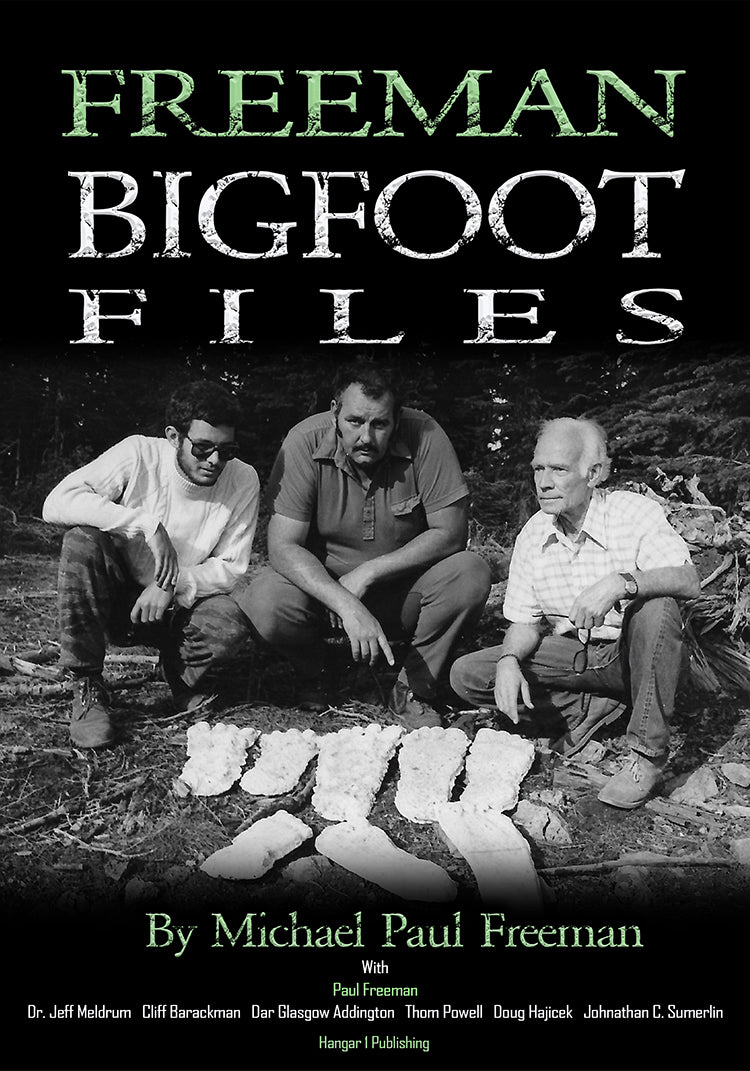Hollow Moon Theory: NASA's Secret Truth Revealed

By Howard Callahan, Ufologist
There's something about the Moon that captures our imagination. Hanging in the night sky like a silent guardian, Earth's only natural satellite has fascinated humanity since we first looked up and noticed that glowing orb changing shape throughout the month. But what if this familiar celestial body isn't what it appears to be? What if the Moon—our Moon—isn't a natural satellite at all, but something manufactured?
This is the core claim of the Hollow Moon Theory, an idea suggesting our lunar companion is either partially or completely hollow—potentially even an artificial structure placed in orbit around Earth by intelligent beings. While mainstream science dismisses this notion entirely, proponents point to a surprising array of evidence they believe NASA and other space agencies have been concealing for decades.
For a theory dismissed by most astronomers as pseudoscientific nonsense, the Hollow Moon hypothesis has demonstrated remarkable staying power. It's not just internet conspiracy theorists pushing this idea—Soviet scientists, NASA insiders, and ancient cultures all feature in this cosmic mystery. Like the Moon itself, which shows us only one face while keeping its far side permanently turned away, there may be more to this story than meets the eye.
From Science Fiction to "Scientific" Theory
The Hollow Moon concept has a literary pedigree stretching back over a century, beginning with H.G. Wells' 1901 novel "The First Men in the Moon." In this pioneering work of science fiction, Wells imagined a lunar interior populated by an insect-like alien species called the "Selenites." This creative vision wasn't presented as fact, but it planted seeds in the public imagination.
Other fiction writers expanded on this theme. Edgar Rice Burroughs wrote "The Moon Maid" (1922), depicting a hollow lunar world with an atmosphere and inhabitants. C.S. Lewis referenced a hollow Moon called "Sulva" in his 1945 novel "That Hideous Strength." Even serious author Herman Wouk ventured into this territory with "The Lomokome Papers" (1947).
But the critical transformation from fiction to supposed theory came in July 1970, when two Russian scientists, Mikhail Vasin and Alexander Shcherbakov, published an article titled "Is the Moon the Creation of Alien Intelligence?" in the Soviet journal Sputnik. It's worth noting that Sputnik wasn't a scientific journal but rather the Soviet equivalent of Reader's Digest—a popular magazine, not a peer-reviewed publication.
In their article, Vasin and Shcherbakov proposed that the Moon might be an artificial structure—essentially a giant spacecraft created by beings with technology far beyond our own. They suggested this spacecraft had been hollowed out in deep space, with huge machines melting rock to form large cavities within the Moon before spewing the molten refuse onto the surface.
"The more minutely we go into all the information gathered about the Moon," they wrote, "the more we are convinced that there is not a single fact to rule out our supposition."
Their timing was perfect. Just a year after the historic Apollo 11 landing, when public interest in the Moon was at an all-time high, these Soviet scientists offered an alternative narrative that captured the imagination of many who suspected there might be more to the Moon than NASA was revealing.
Bell Ringing and Density Puzzles: The Evidence
Ask any Hollow Moon theorist what their strongest evidence is, and they'll likely point first to the "ringing bell" phenomenon discovered during NASA's Apollo missions. Between 1969 and 1977, seismometers placed on the Moon by Apollo astronauts recorded vibrations from various impacts, and the results were unexpected.
On November 20, 1969, during the Apollo 12 mission, the lunar module was deliberately crashed into the Moon's surface after astronauts Conrad and Bean returned to the command module. The impact, equivalent to one ton of TNT, created what NASA called a "moonquake." Seismic measurements showed vibrations lasting for nearly an hour.
Later, during Apollo 13, an even heavier S-IVB rocket stage was crashed into the lunar surface, and this time the Moon reportedly "rang" for over three hours, with vibrations traveling to a depth of about 20 miles.
NASA scientist Clive R. Neal described it by saying "the Moon was ringing like a bell." This phrase—"ringing like a bell"—would become central to the Hollow Moon theory. After all, only hollow objects ring when struck, right?
Another puzzling piece of evidence concerns the Moon's density. Our lunar satellite has an average density of about 3.3 g/cm³, while Earth's is approximately 5.5 g/cm³—making the Moon roughly 60% as dense as Earth. If both celestial bodies formed from the same material, why such a difference? Hollow Moon advocates suggest this lower density indicates large empty spaces inside.
The formation of lunar craters also raises questions. Large lunar craters are often relatively shallow with flat or sometimes slightly convex bottoms, regardless of their size. In conventional impact craters, larger impacts should create deeper craters. Hollow Moon theorists suggest this unusual crater pattern indicates that after penetrating the Moon's surface, large meteorites hit a tough inner shell—possibly metallic—preventing deeper penetration.
Then there's the Moon's orbit and position. The Moon is about 400 times smaller than the Sun, but it's also about 400 times closer to Earth, making them appear almost exactly the same size in our sky. This allows for perfect solar eclipses where the Moon covers the Sun precisely, leaving only the corona visible.
Isaac Asimov noted this apparent coincidence in 1963: "There is no astronomical reason why the Moon and the Sun should fit so well. It is the sheerest of coincidences, and only the Earth among all the planets is blessed in this fashion."
Finally, there's the composition of lunar materials. Substances like titanium, chromium, and zirconium, which are relatively rare on Earth, are found in abundance on the Moon. These materials happen to be highly resistant to heat, corrosion, and structural stress—precisely the materials one might use to build a spacecraft, according to the theory.
Apollo Missions: What NASA Isn't Telling Us
When Apollo 11 returned to Earth in 1969, the world watched a televised press conference with the heroic astronauts. What many observers noted, however, was how subdued Neil Armstrong, Buzz Aldrin, and Michael Collins appeared. Rather than displaying the excitement you'd expect from men who had just achieved the greatest exploration milestone in human history, they seemed almost somber.
Hollow Moon theorists point to this as evidence that the astronauts had discovered something on the Moon that shook them to their core—perhaps confirmation that our natural satellite isn't natural at all.
Throughout the Apollo program, there were numerous occasions when radio communications between astronauts and Mission Control experienced "blackouts." NASA attributed these to technical issues, but conspiracy theorists suggest these were deliberate cuts to prevent the public from hearing astronauts discuss anomalous structures or objects they observed on the lunar surface.
The photographic evidence is equally controversial. NASA released thousands of images from the Apollo missions, but Hollow Moon advocates claim many show signs of editing or airbrushing to remove evidence of artificial structures. They point to unusual light formations, geometric patterns, and even what appear to be massive towers visible in some unaltered photographs.
Perhaps most telling, they argue, is NASA's apparent reluctance to return to the Moon. After Apollo 17 in December 1972, human exploration of the lunar surface abruptly ceased. For over fifty years, no human has set foot on the Moon despite significant technological advancements that would make such missions easier than they were in the 1960s.
When the Freedom of Information Act (FOIA) was used to request certain Apollo mission data, researchers received documents with significant redactions. What information could possibly require classified status fifty years after it was collected from a supposedly lifeless, natural satellite?
Science Responds: Natural Explanations for Lunar Mysteries
Mainstream scientists have explanations for all the "evidence" cited by Hollow Moon theorists, starting with the famous "ringing like a bell" observation.
The prolonged vibrations from moonquakes, they explain, are due to fundamental differences in composition between the Moon and Earth, not because the Moon is hollow. The Moon is extremely dry compared to Earth. On our planet, water weakens stone and dampens vibrations. As NASA scientist Clive R. Neal explained: "Water weakens stone, expanding the structure of different minerals. When energy propagates across such a compressible structure, it acts like a foam sponge—it deadens the vibrations."
Without this dampening effect, vibrations on the Moon naturally last much longer. The phrase "ringing like a bell" was a colorful description, not a literal acoustic comparison. The Moon didn't actually produce sound; rather, the seismic vibrations persisted for an unusually long time compared to Earth.
As for the density question, scientists point to the Giant Impact Hypothesis, currently the most accepted theory of lunar formation. This proposes that approximately 4.5 billion years ago, a Mars-sized body (sometimes called Theia) collided with the early Earth. The debris from this collision—primarily material from Earth's crust and mantle, not its denser iron core—was ejected into orbit and eventually coalesced to form the Moon.
Since the Moon formed primarily from Earth's less dense outer layers rather than its dense iron core, it naturally has a lower overall density. The Moon does have a core, but it's proportionally much smaller than Earth's, making up only about 1-2% of its mass compared to Earth's core, which is about one-third of its mass.
The uniformity in crater depth is explained by impact mechanics. When a large meteorite strikes the lunar surface, it creates an initial deep cavity. However, this cavity almost immediately begins to collapse under its own weight. The floor rebounds upward while the rim collapses inward, resulting in a shallower crater than the initial impact would suggest.
Additionally, many of the Moon's large, flat-bottomed craters are actually impact basins that were later filled with lava, creating the dark plains or "maria" visible from Earth. This lava flooding naturally created flat surfaces, further explaining the appearance of these craters.
As for the "perfect" eclipses, scientists point out that these are actually a temporary cosmic coincidence in Earth's history. The Moon is gradually moving away from Earth at a rate of about 3.8 centimeters per year due to tidal interactions. Billions of years ago, the Moon appeared much larger in our sky; billions of years in the future, it will appear smaller and no longer create perfect solar eclipses.
Based on multiple lines of evidence—including seismic data, moment of inertia parameters, and gravitational field variations—scientists have determined that the Moon has a layered structure consisting of a thin crust, an extensive mantle, a partially molten boundary layer, a liquid iron outer core, and a solid inner core. This structure is entirely inconsistent with the Hollow Moon hypothesis.
Beyond the Basic Theory: Alternative Models
The Hollow Moon Theory isn't a monolithic idea. Over time, it has spawned numerous variations that expand on the basic premise in different directions.
Spaceship Moon Theory
The original Spaceship Moon Theory (or Vasin-Shcherbakov Theory) suggests the Moon is essentially a gigantic spacecraft brought to orbit Earth by unknown beings with advanced technology. In this version, the inside presumably contains machinery, living quarters, or other structures necessary for its function as a spacecraft.
Alien Base Theory
A slightly different version, the Alien Base Theory, suggests that while the Moon itself may be natural, it contains vast artificial caverns and structures that serve as bases for extraterrestrial beings. This theory gained popularity after reports of strange lights and anomalies observed on the lunar surface.
Simulation Anchor Theory
One of the more metaphysical variations, the Simulation Anchor Theory, proposes that the Moon functions as an anchor or control node for a simulated reality. According to this idea, if we live in a simulated universe (similar to the concept explored in "The Matrix" films), the Moon might be a physical manifestation of the hardware or software managing this simulation.
Surveillance Device Theory
Then there's the Surveillance Device Theory, which proposes that the Moon's purpose is to observe humanity. The fact that the Moon is tidally locked—always showing the same face to Earth—is cited as evidence that it's intentionally positioned to monitor our planet, like a celestial security camera.
Nazi Moon Base Theory
Perhaps the most outlandish variation, the Nazi Moon Base Theory, blends the Hollow Moon theory with conspiracy theories about Nazi survival after World War II. This version claims that Nazi scientists established a secret base inside the Moon in the 1940s, possibly aided by extraterrestrials.
Ancient Human Legacy Theory
Finally, the Ancient Human Legacy Theory suggests the Moon might have been created not by aliens but by an advanced human civilization that existed millions of years ago. These ancestors supposedly built the Moon as a time capsule or survival mechanism before their own civilization collapsed.
The Cultural Impact and Why We Believe
Despite its scientific implausibility, the Hollow Moon Theory has firmly established itself in popular culture and continues to inspire creative works across various media.
Roland Emmerich's 2022 disaster film "Moonfall" centers on the discovery that the Moon is an ancient artificial megastructure built by advanced human ancestors. When a mysterious AI entity begins to destroy it, the Moon's orbit deteriorates, threatening Earth. While clearly presented as fiction, such cultural products keep the concept in the public imagination.
Beyond entertainment, the Hollow Moon Theory has become a fixture in conspiracy theory communities, often linking to other popular conspiracies about hidden powers controlling human civilization.
From a psychological perspective, several factors explain why such theories persist despite contradicting evidence:
- Humans are naturally inclined to see patterns and attribute intentional agency to events and objects. When confronted with coincidences or anomalies related to the Moon, some people find it more satisfying to attribute these to intelligent design rather than natural processes or statistical coincidence.
- The theory thrives in contexts where there's a general distrust of scientific institutions, governments, and other authorities. If someone already believes that NASA is hiding information about UFOs or faked the Moon landings, they're more likely to embrace the idea that the Moon itself might be something other than what official sources claim.
- Conspiracy theories often provide adherents with a sense of possessing special, hidden knowledge that mainstream society doesn't acknowledge. Believing in the Hollow Moon Theory allows someone to feel they understand "the truth" about our cosmic neighborhood that scientists and governments are either missing or deliberately concealing.
New Frontiers: Modern Lunar Exploration
Recent lunar missions have provided data that further challenges the Hollow Moon Theory. China's Chang'e missions to the far side, India's Chandrayaan program, and NASA's Lunar Reconnaissance Orbiter have all returned detailed information about the Moon's composition and structure that consistently supports a natural origin.
NASA's Gravity Recovery and Interior Laboratory (GRAIL) mission, which ended in 2012, created the most accurate gravitational map of the Moon to date. The data revealed a crust that's thinner than previously thought (34-43 kilometers) and confirmed the existence of mass concentrations ("mascons") beneath lunar basins—dense regions that affect the Moon's gravitational field in ways that would be impossible if the Moon were hollow.
The discovery of lunar caves and lava tubes has been particularly interesting. In 2009, the Japanese Kaguya spacecraft discovered a vertical shaft in the Marius Hills region, and in 2011, NASA's LRO found a similar feature in the Sea of Tranquility. These natural tunnels formed by ancient lava flows could potentially serve as shelters for future human habitation.
Rather than supporting the Hollow Moon Theory, these discoveries actually explain how natural processes can create cavity structures within a solid body. The lava tubes and caves are relatively small features formed by specific volcanic processes, not evidence of a vast hollow interior.
Water ice has been confirmed in permanently shadowed craters at the lunar poles, another finding that fits perfectly with natural formation models but makes little sense in the context of an artificial structure. This ice is believed to have come from comet impacts over billions of years—exactly what we'd expect for a natural satellite, not an engineered spacecraft.
As NASA prepares for the Artemis program—which aims to return humans to the lunar surface within this decade—we'll soon have new data to further refine our understanding of the Moon's structure and history. If there were any truth to the Hollow Moon Theory, the upcoming missions would likely discover evidence supporting it.
The Moon continues to surprise us with its complexity and the mysteries it still holds. Yet every new discovery points to a natural origin and evolution, not an artificial construction. The real Moon—with its ancient craters, frozen water, and complex geological history—is far more fascinating than any conspiracy theory could suggest.
In the end, the Hollow Moon Theory remains a testament to human imagination and our tendency to seek patterns and meaning in the cosmos. It's a story we've created to explain the inexplicable, to find purpose in coincidence, and perhaps to comfort ourselves with the idea that we're not alone in the universe. The truth about our lunar companion may be less dramatic than a cosmic spacecraft, but it's no less amazing—a natural satellite that has profoundly shaped Earth's development and human history through its gravitational influence, its light in the night sky, and the inspiration it provides to explore beyond our home planet.
From Bigfoot to UFOs: Hangar 1 Publishing Has You Covered!
Explore Untold Stories: Venture into the world of UFOs, cryptids, Bigfoot, and beyond. Every story is a journey into the extraordinary.
Immersive Book Technology: Experience real videos, sights, and sounds within our books. Its not just reading; its an adventure.


























